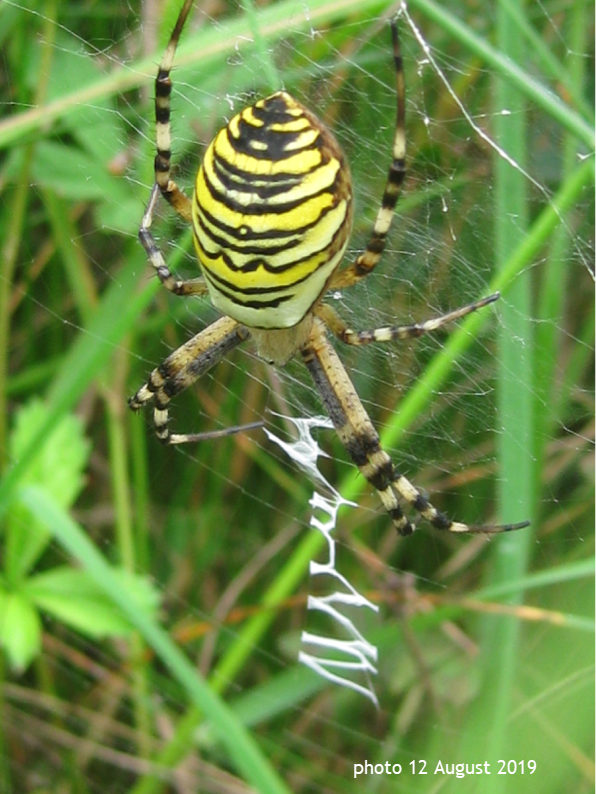Have you seen Wasp Spiders?
 Our first was photographed in the churchyard in 2017. The first recorded in Britain was in 1922, in Kent. They are moving north from southern Europe, global warming probably helping them survive our milder winters. Now they are found, sometimes in great numbers from Norfolk to Cornwall. This solitary female, about 16mm long appeared here this year.
Our first was photographed in the churchyard in 2017. The first recorded in Britain was in 1922, in Kent. They are moving north from southern Europe, global warming probably helping them survive our milder winters. Now they are found, sometimes in great numbers from Norfolk to Cornwall. This solitary female, about 16mm long appeared here this year.
She caught about one grasshopper a day. Each of her prey was first tightly wrapped in silk. Her bite then paralysed it. She then injected an enzyme to dissolve its protein. Female wasp spiders usually eat their diminutive, brown male partner after mating. This has the merit of recycling his protein. There is no record however of any wasp spider ever harming a human being.
Scientists are unsure if the purpose of the extraordinary zigzag white ribbon she spins in white silk on the web in front of her is to attract insects. But grasshoppers caught in her web usually demolish it. Wasp spider webs, unlike the ones spun across our paths by garden spiders later in the autumn, are not at face-height. They are less than a half a metre above the ground, in hollows within tall grass, usually where wildflowers are attracting insects.
Look out for the small area marked out with string to protect her when the grass was cut. It is north of the Church Extension. Although she would probably not survive our winter herself, her hundreds of spiderlings should hatch out next May. Our spider may be the granddaughter of the first one recorded here in 2017.
In spite of their black and yellow stripes, wasp spiders seem surprisingly good at concealing themselves. She herself vanished after three weeks.
A search will be made for the small silk cocoons she spins in the grass to contain her eggs, in the hope that they survive.
Wasp Spider (Argiope bruennichi)
